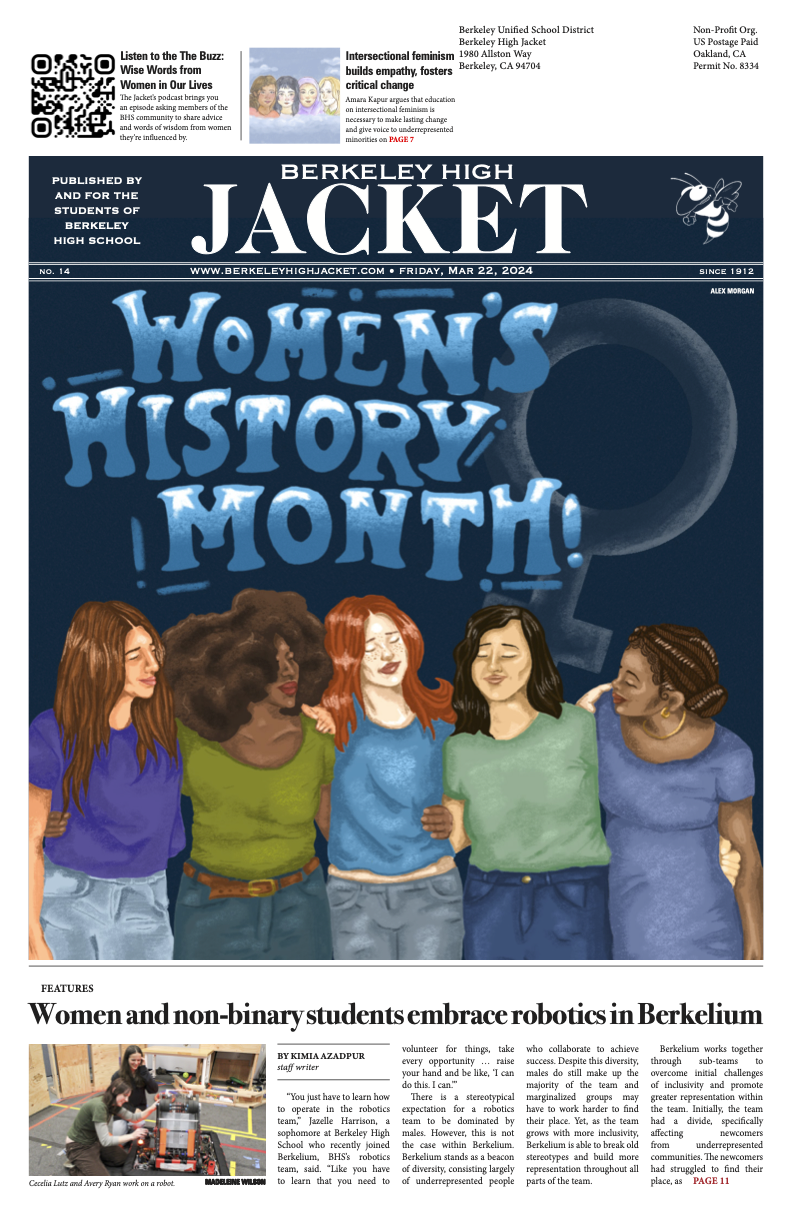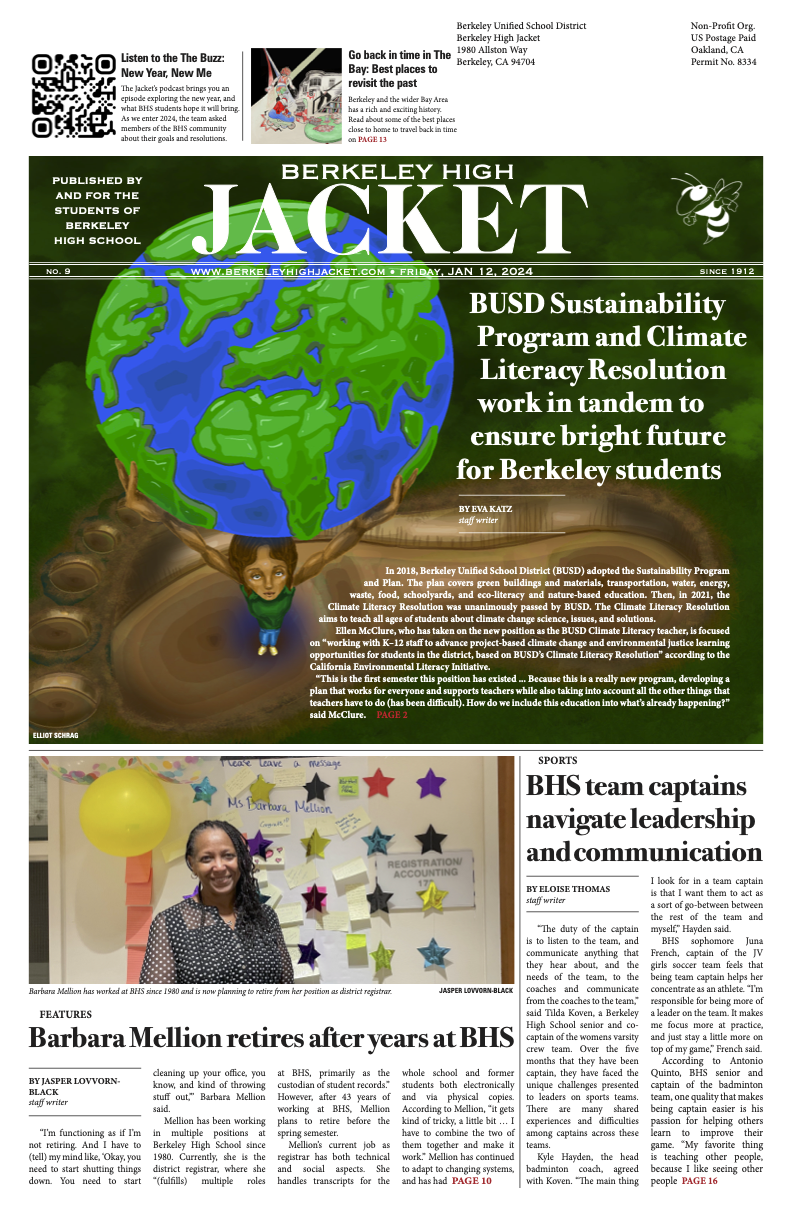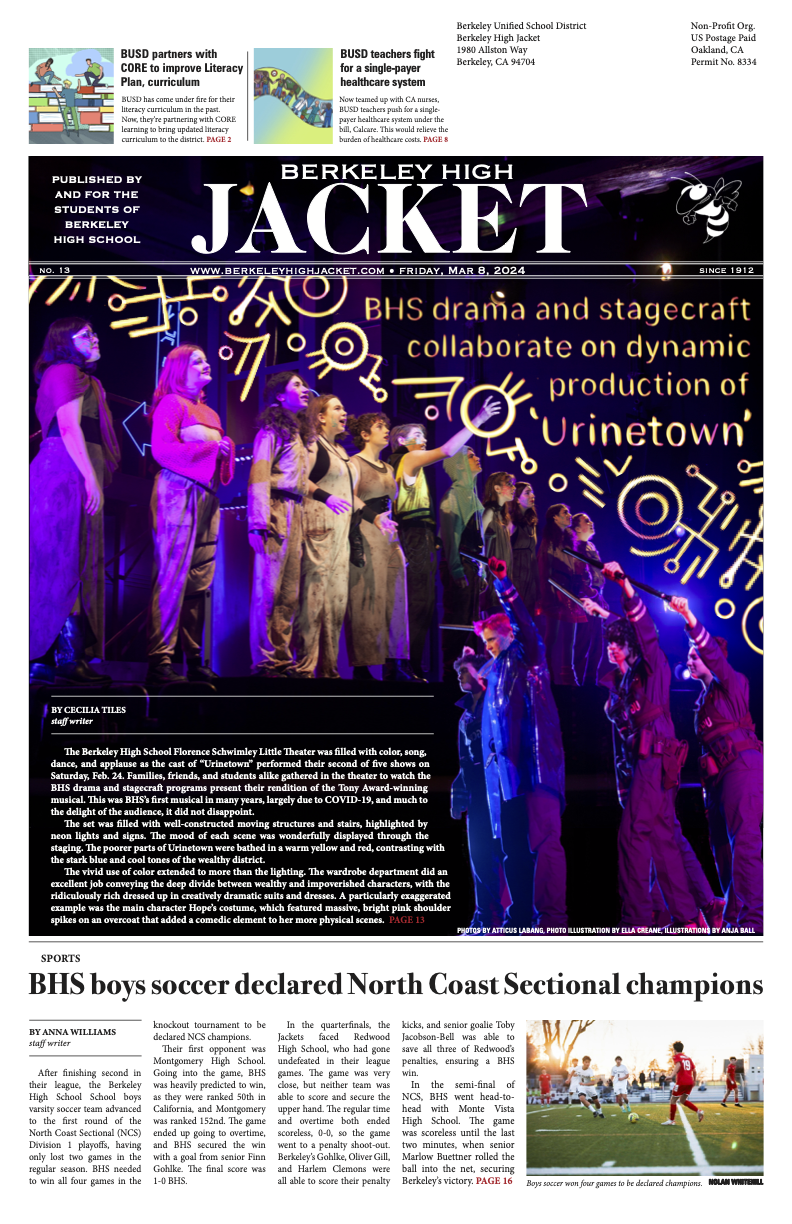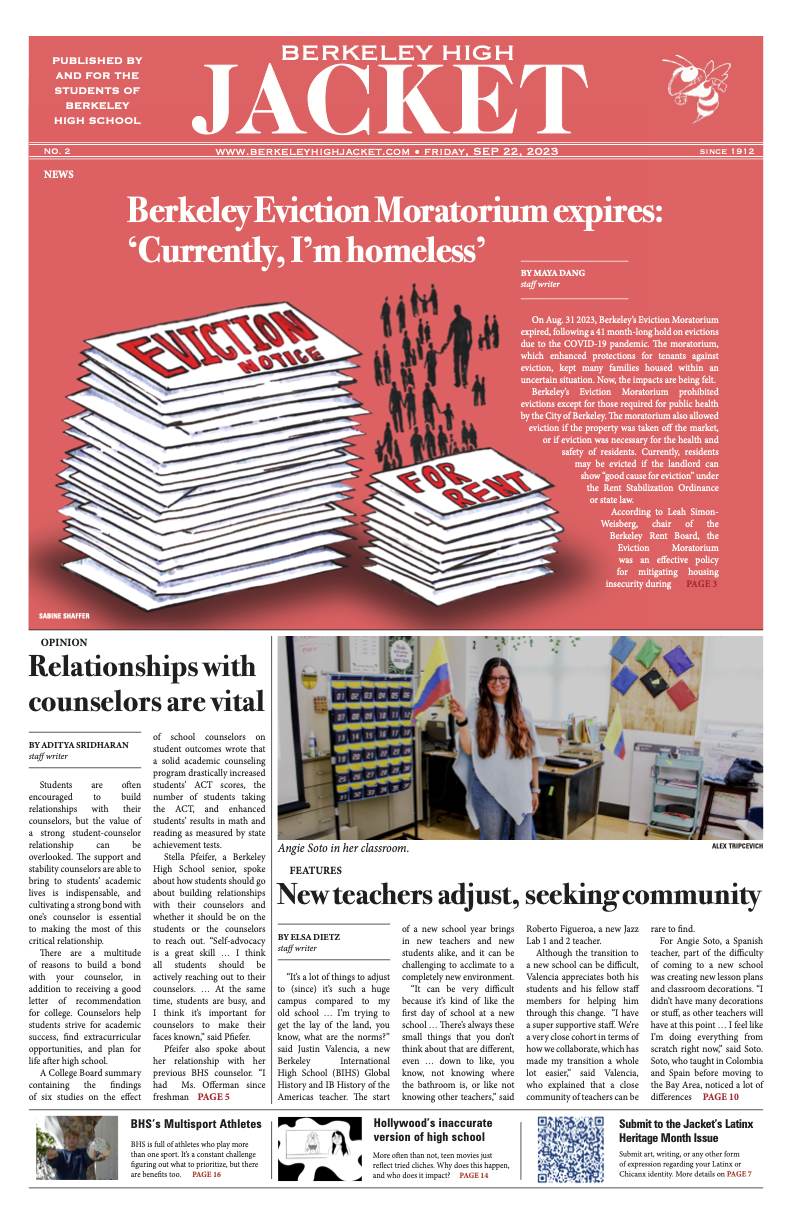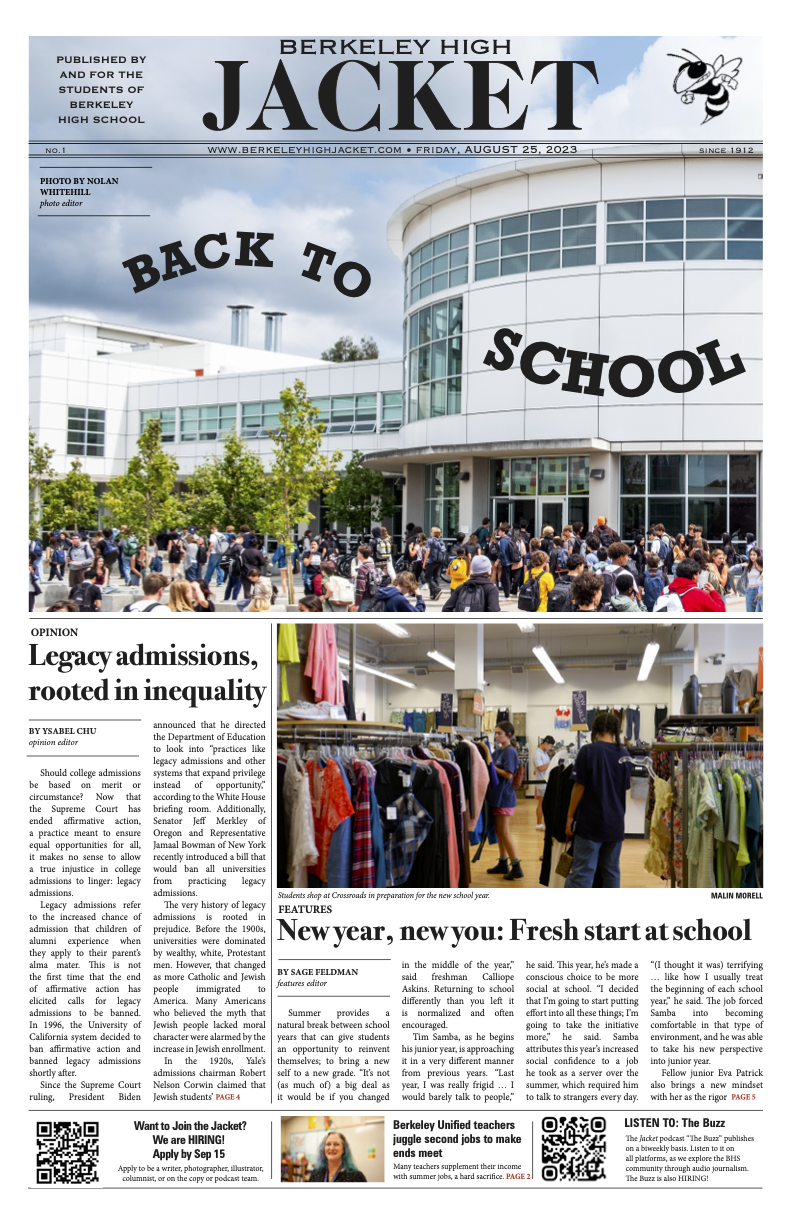Field trips have long been a staple of the Berkeley High School experience, offering students a chance to step out of the classroom and into real-world learning. From science lessons at San Francisco’s Exploratorium and art exhibits at the Oakland Museum of California to overnight retreats in the Santa Cruz redwoods, BHS students go on a wide array of field trips. While most BHS students have the opportunity to attend at least one field trip, not all have access to the same field trips, especially across different learning pathways. As students and teachers push to advocate for more field trips, it’s important to revisit the factors that influence the number of trips a learning community can offer.
“Field trips are a different way of learning and growing together,” John Becker, an Arts and Humanities Academy (AHA) English teacher, said, “Getting out in the world is a really useful and powerful way for people to learn.” Field trips check the boxes when it comes to experiential learning, a form of education where students learn by doing. Experiential learning focuses on students connecting in-classroom theories to real-world experiences, and through field trips, students get an opportunity to learn in unique ways. “Field trips allow me to understand things at a deeper level in comparison to just absorbing information through reading a textbook or watching a documentary,” Simon Kozuszek, a Berkeley International High School (BIHS) sophomore, said.
According to interviews with BHS students and teachers, a student might have the opportunity to attend anywhere from one to ten field trips before graduation.
All eligible freshmen (having not committed repeated offenses and who have maintained acceptable attendance) “usually go on one field trip with their hive,” Joseph Smith, an Academic Choice (AC) co-teacher lead and World History and Economics teacher, said. After freshman year, field trips become less of a promise for the general student body.
“I went on one (field trip) in (Universal Ninth Grade) U9, but other than that, I’ve gone on no field trips with my learning community,” Amani Meleis, a senior in AC, said. One field trip was offered to all AC juniors in the 2024-25 school year, but Meleis did not attend. Ruza Martinac-Isaacson, a junior in Communication Arts and Sciences (CAS), had a contrasting experience regarding field trips. “I’ve been on five different field trips,” she said, “I went to the Oakland A’s baseball game as a freshman, sophomore year I went to a ropes course and an overnight retreat with CAS, and this year I have been on an art history field trip and another CAS retreat.” Martinac-Isaacson’s art history field trip was not a CAS organized field trip.
When asked how they feel about the amount of field trips they went on, Meleis and Kozuszek had a similar viewpoint, a viewpoint in support of upping the number of trips available. “I would definitely like to go on more field trips,” Kozuszek said. Martinac-Isaacson felt content with her field trip experience, and said, “I think that I’ve been on the right amount (of field trips) ... if there were more, I would be missing my non-CAS classes too much.”
One of BIHS’s co-teacher leads, Melissa Jimenez, shared similar remarks to Martinac-Isaacson, but focused more on the effect that field trip absences can have on the school as a whole. “When students are gone on a field trip, especially when they are in a large program like BIHS, then other teachers are impacted. Specifically in the math and science counterparts, which are blended classes, when BIHS students have a trip, then like half of the class will just be absent,” she said. This can make teachers more hesitant to propose field trips, according to Jimenez.
Teachers’ concerns around absences aren’t the only challenge they face when trying to plan field trips. What can be argued as the most difficult problem regarding field trips, and one that students don’t often understand the full extent of, is planning. Smith took on the role of organizing an AC field trip last year and acknowledged how this was an accomplishment for AC. “The last AC field trip had been two years prior ... and there’s not really a handbook for these types of things, so for AC, field trips are a struggle to execute,” Smith said.
The first step in the process was picking a venue, and then setting up transportation. “The biggest challenge is definitely transportation, because funding a private bus is extremely expensive, which leaves BART as the most viable form of transportation, which decreases our field trip options significantly,” Smith said. Next step was chaperones, which Smith found to be a difficult process. “We need to have a 1:10 ratio, one adult for every ten students,” Smith said. Jimenez noted that chaperones often cancel at the last minute, further complicating planning. “I end up having to beg for chaperones,” she said. “All of these steps come with their own individual challenges, so it is a difficult endeavor to accomplish,” Smith said.

Jimenez, who has coordinated many field trips for BIHS, reflected on her experiences planning them. “When you're running a field trip, it feels like you have a second job for four to six weeks,” Jimenez said.
Not only can AC field trips be more challenging to run given the sheer number of AC students, around 385 per graduating class, but financial constraints limit the variety and accessibility of unique retreats that are otherwise available to smaller schools. The smaller learning communities, Academy of Medicine and Public Service, AHA, and CAS, are part of the California Partnership Academies initiative. This state-run program provides supplemental funding for the small schools at BHS, since they qualify as career-themed learning communities. On top of the extra money small schools receive as academies, small schools often apply for grants — which are available to any program — which can provide an additional source of funding. “We have gotten grants that do have restrictions and rules about how they can be used, but some of the grant money we use for field trips,” Becker said. This additional money, in turn, leads the small schools to have more funding per student than the larger schools.
“Having access to more field trips is something that would be good for the larger schools,” Martinac-Isaacson said. AC students agreed. Of 552 AC students surveyed by small school leadership in the 2024-25 school year, there was a distinct opinion that they shared. “Field trips were the number one thing AC students were asking for,” Smith said. While the goal of having one universal AC field trip was met, increasing the number of field trips for the larger schools could be challenging. “I just think that what we are doing right now is the maximum that we can, given the resources we have,” Jimenez said.
Overall, field trips are appreciated by BHS students regardless of their learning pathway, according to Meleis. “There are trade-offs to every program, with the number of field trips being one of them,” Becker said, “so if field trips are important to you, then that could be a reason not to put AC or BIHS higher in the lottery form.” The BHS learning community lottery system allows freshmen to rank their preferred small schools, giving students the opportunity to have some choice in what the next three years of their high school experience will look like. What is clear is that the small-school structure was built on variation, not uniformity. And for now, that means the number of field trips students take may depend as much on their pathways as on the opportunities available.
